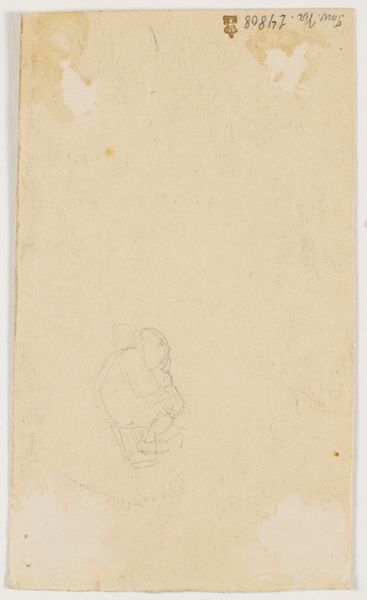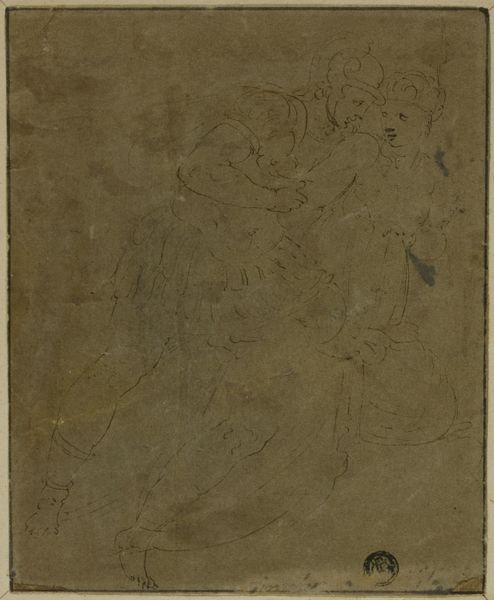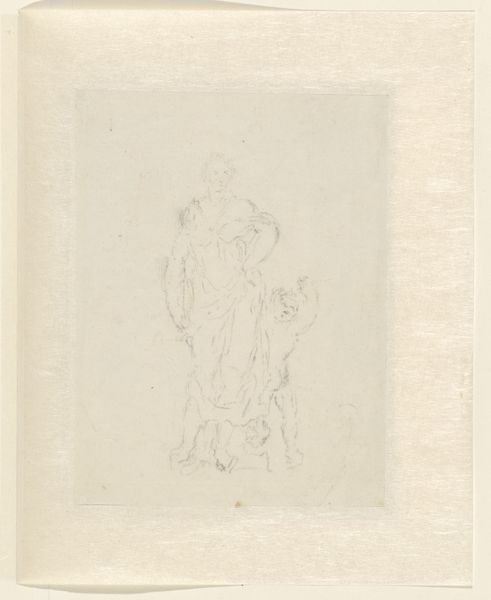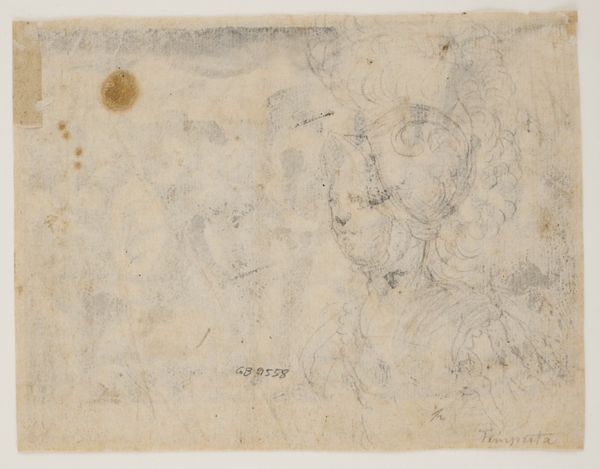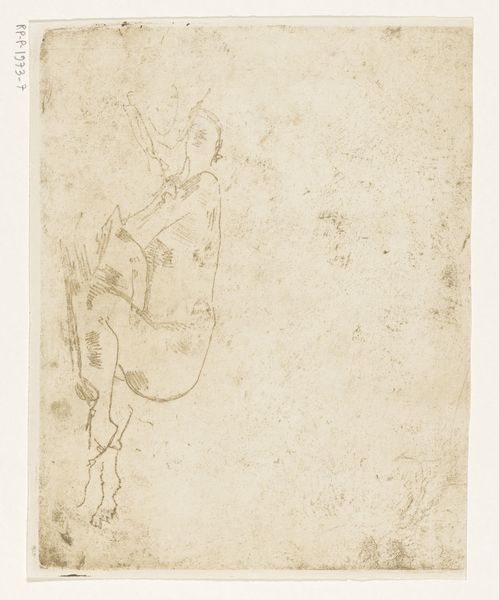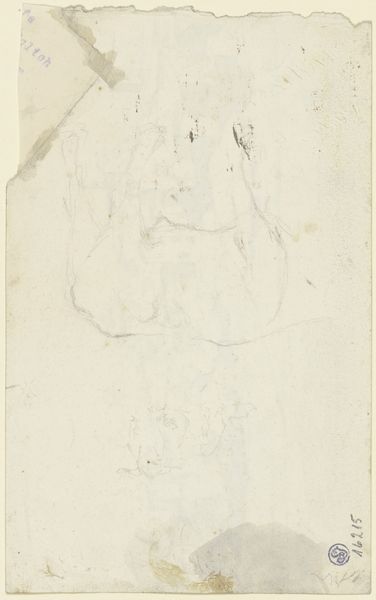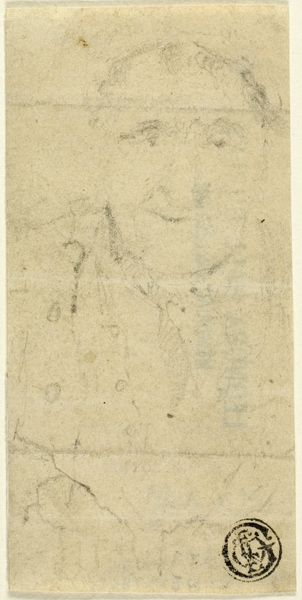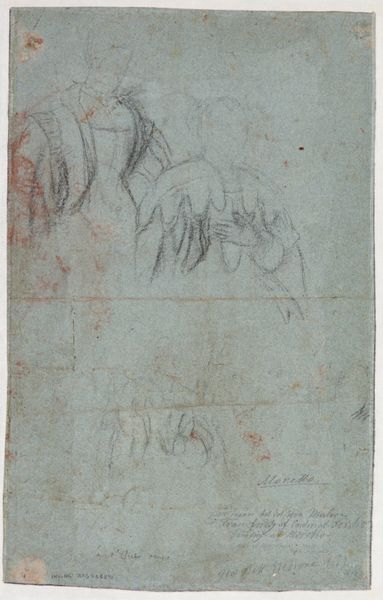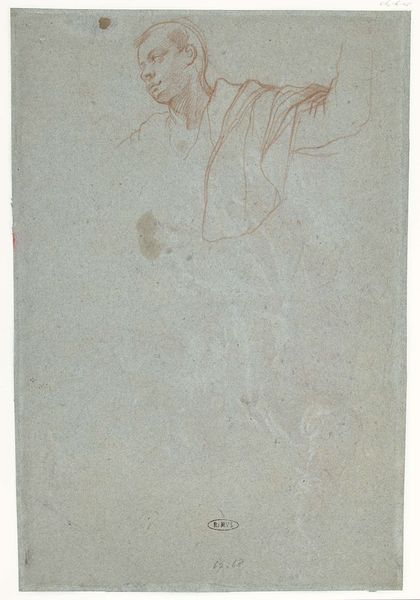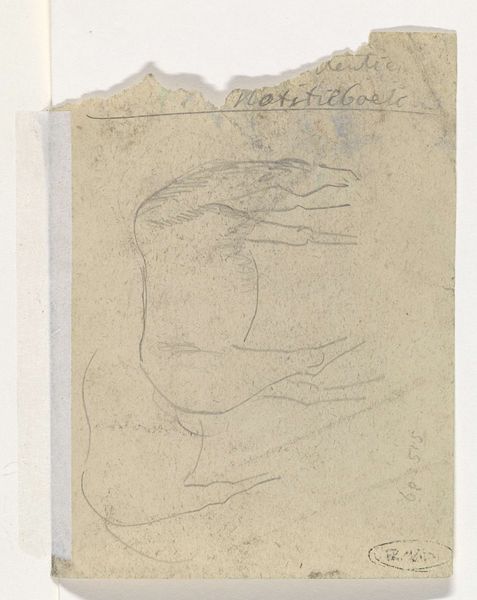
drawing, pencil
#
portrait
#
drawing
#
baroque
#
pencil sketch
#
figuration
#
pencil
Dimensions: height 220 mm, width 165 mm
Copyright: Rijks Museum: Open Domain
Editor: This drawing, titled "Vluchtige opzet voor een zittende faun," is by Simon Vouet, dating from between 1600 and 1665. It's rendered in pencil, and what strikes me is how raw and immediate it feels – almost like catching the artist in the act of thinking. What do you see in this piece? Curator: What I find compelling is to consider the socio-economic context of drawing during this period. Pencil sketches like these, the physical labor involved, they were vital, utilitarian tools in the vast machine of Baroque art production, not always viewed as 'art' themselves. Editor: So, less about the finished product and more about the... pencil miles? Curator: Exactly. Think about the sourcing of materials – where did Vouet’s graphite come from? Who prepared the paper? The act of sketching wasn't an isolated act of genius; it was labor embedded within a larger workshop ecosystem. The 'Vluchtige opzet' becomes a record of production. How does that reframing impact our understanding? Editor: It definitely challenges this romantic notion I had of the artist just spontaneously creating. I see it as almost a blueprint now, a small cog in the workshop machine you mentioned. Was this typical for Vouet, or was he exploring more industrial-type approaches to creating art for his era? Curator: That’s the exciting part. Examining Vouet's whole oeuvre for the degree to which it functions on such a model exposes what the materiality reveals about artistic innovation. Even a sketch gives insight into economic practices during Baroque era, beyond individual inspiration. It encourages to think about the studio work distribution, which gives even greater value to this sketch. Editor: I never considered looking at a simple pencil drawing as something that reveals supply chains and labor practices. It’s like a fossil of Baroque artistic manufacture! Curator: Indeed. And those 'fossils', when analyzed materially, dismantle the boundaries between 'high art' and the artisanal labor that underpinned it.
Comments
No comments
Be the first to comment and join the conversation on the ultimate creative platform.

